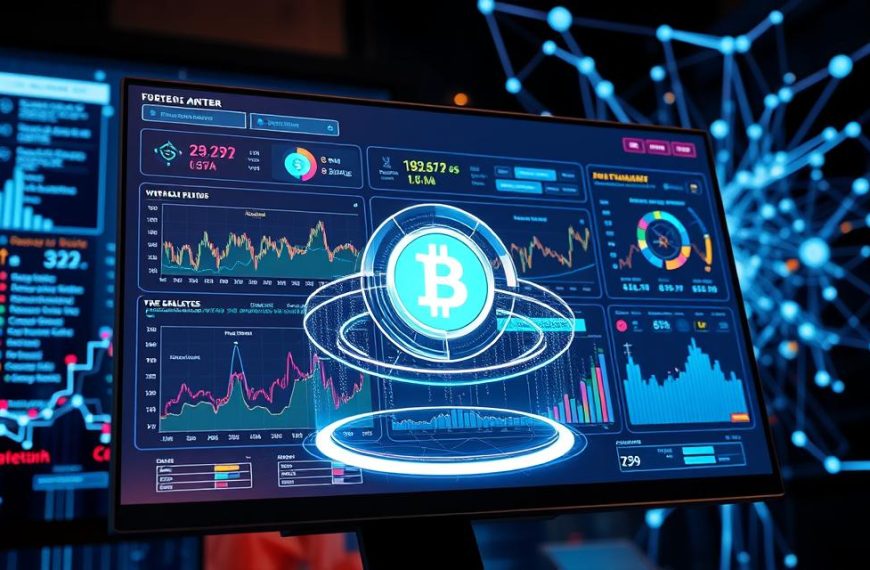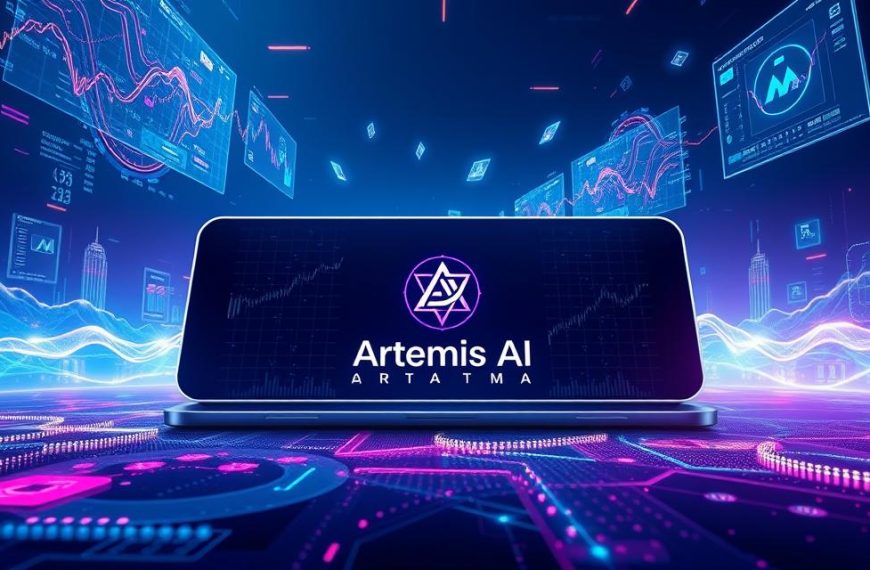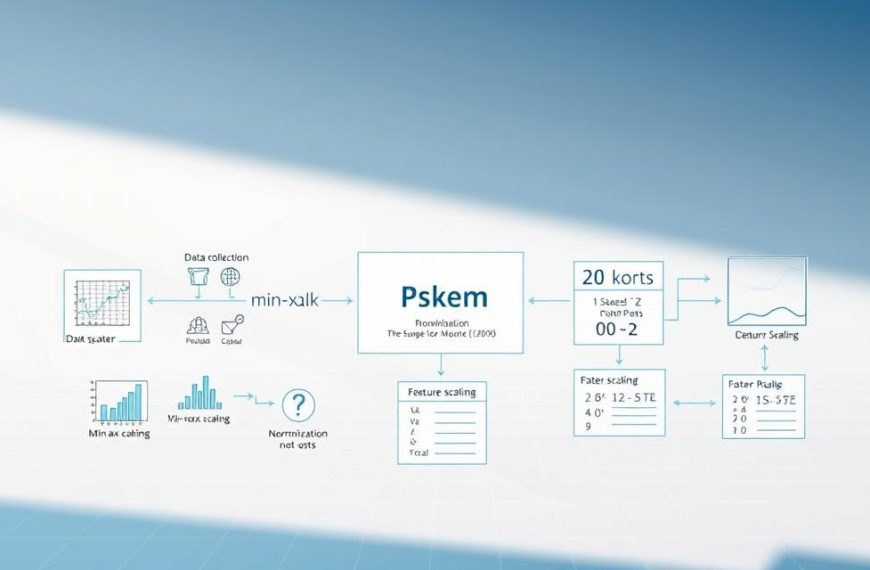Modern blockchain ecosystems generate vast amounts of information, yet accessing this data efficiently remains a challenge. Enter a protocol reshaping how developers interact with decentralised networks. Its indexing solutions simplify complex queries across chains like Ethereum, making organised retrieval possible for the first time.
This system’s native token, GRT, powers its decentralised infrastructure. Participants earn rewards for maintaining network integrity, creating a self-sustaining economy. Over 30,000 developers already utilise its capabilities, according to recent ecosystem reports.
Artificial intelligence integration elevates its potential further. Algorithms optimise indexing processes while predicting query patterns – a feature attracting institutional interest. Major decentralised applications now rely on this framework for real-time insights.
For those exploring blockchain’s future, understanding GRT and its role proves essential. The protocol doesn’t just store information; it unlocks actionable intelligence across Web3 environments. As adoption grows, its influence on crypto infrastructure becomes undeniable.
Introduction to The Graph AI Crypto
Efficient data retrieval remains a cornerstone for advancing Web3 technologies. This indexing protocol addresses critical challenges developers face when interacting with decentralised networks, transforming raw blockchain information into structured resources.
Overview and Objectives
At its core, the system simplifies accessing data across chains like Ethereum and IPFS. Its architecture enables precise querying through standardised methods, removing historical bottlenecks in blockchain development. The native GRT token incentivises network participation, ensuring reliable service delivery.
Significance in the Blockchain Industry
Over 30,000 development teams now leverage this infrastructure for building decentralised applications. By bridging complex networks with practical tools, it accelerates innovation in DeFi and broader Web3 ecosystems. Institutional adoption continues growing as enterprises recognise its capacity to streamline operations.
Future upgrades aim to expand multi-chain support while enhancing query efficiency. This positions the protocol as essential infrastructure for tomorrow’s decentralised solutions – a fact underscored by recent partnerships with major blockchain initiatives.
AI-Powered Revolution in Blockchain Data Analysis
As decentralised networks expand, traditional data methods fall short. Machine learning integration now enables protocols to process complex queries with unprecedented precision. This evolution marks a turning point for developers needing real-time insights from ever-growing ledgers.
The hybrid system merges algorithmic pattern recognition with established indexing frameworks. Adaptive models analyse usage trends to pre-fetch frequently accessed data, slashing response times by up to 40% in benchmark tests. Such efficiency gains prove critical for time-sensitive decentralised applications.
| Features | Traditional Indexing | AI-Enhanced Approach |
|---|---|---|
| Query Speed | 2-5 seconds | 0.8 seconds |
| Accuracy Rate | 89% | 97.5% |
| Adaptability | Manual updates | Self-optimising |
Network participants using GRT tokens benefit directly from these advancements. Predictive analytics automatically allocate resources where demand peaks, creating smoother experiences for end-users. Over 60% of indexers report reduced operational costs since adopting these intelligent systems.
Developers gain tools to build self-learning dApps that evolve with user behaviour. The protocol’s architecture continuously refines its understanding of blockchain data relationships, unlocking new analytical possibilities. This technological leap positions decentralised networks to rival centralised platforms in responsiveness and scalability.
Foundations of The Graph Protocol
Structured information access forms the backbone of effective blockchain development. This framework’s architecture transforms chaotic ledger entries into organised resources through systematic indexing protocol mechanisms. Developers leverage open APIs called subgraphs to bypass complex node operations entirely.
Indexing and Data Querying Explained
Sophisticated algorithms catalogue transactional records into searchable formats. By employing GraphQL, users retrieve specific data points without sifting through entire chains. Subgraphs act as customisable filters, mapping relationships between smart contracts and on-chain events.
| Feature | Traditional Systems | The Graph Protocol |
|---|---|---|
| Response Time | 4-7 seconds | Under 1 second |
| Query Complexity | Limited filters | Multi-layered parameters |
| Maintenance | Centralised teams | Decentralised network |
Role in DeFi and the Web3 Ecosystem
Decentralised finance platforms require millisecond-level updates for accurate pricing and risk calculations. Over 75% of leading DeFi projects now integrate this infrastructure for real-time oracle feeds.
“Without reliable data pipelines, complex financial instruments simply couldn’t function in Web3 environments,”
notes a London-based dApp architect.
The ecosystem benefits extend beyond finance. NFT marketplaces use subgraphs to track ownership histories, while cross-chain bridges monitor asset flows. With GRT staking ensuring network reliability, this framework becomes indispensable for next-generation applications.
Exploring Open API Creation and Subgraphs
Developers building decentralised applications face a critical challenge: transforming raw blockchain records into usable formats. Customisable tools called subgraphs solve this by letting teams design tailored APIs that filter and structure ledger information. Over 3,000 such solutions now power major platforms like Uniswap and AAVE, handling billions of monthly queries.
Utilising GraphQL for Data Queries
These open APIs employ GraphQL to enable surgical precision in information retrieval. Developers specify exact parameters – wallet addresses, transaction types, or timestamp ranges – avoiding unnecessary data transfers. One subgraph deployment can reduce query response times by 65% compared to manual indexing methods.
The creation process involves three streamlined steps:
- Defining schemas that map smart contract interactions
- Automating event-to-database translations
- Deploying self-updating indexing logic
This framework’s scalability is proven by its September 2020 milestone – 7 billion processed requests across Ethereum and IPFS networks. As highlighted in a detailed analysis, the GRT token’s role in securing these operations ensures network reliability as adoption grows.
Market Cap and Trading Insights
Market dynamics offer crucial insights into decentralised protocols’ health and adoption. GRT’s valuation fluctuates with network usage and broader digital asset trends, reflecting real-time investor sentiment. Over 60% of its circulating supply remains staked, indicating long-term confidence in the ecosystem’s growth.
Price Analysis and Trends
Historical patterns show GRT typically consolidates after major protocol upgrades before testing new resistance levels. The token demonstrated 18% monthly volatility during 2023 – lower than many Layer 1 assets but higher than established DeFi tokens. Current support zones align with staking reward activation points observed in Q1 2024.
Volume, Supply and Market Data
Daily trading volumes average £25-40 million across European exchanges, peaking during network expansions. With 9.3 billion tokens in circulation, supply mechanics prevent inflationary pressures through controlled release schedules. Asian markets account for 38% of spot trades, while derivatives activity concentrates on London-based platforms.
| Metric | Value | Industry Average |
|---|---|---|
| Market Cap Rank | #42 | #58 |
| Circulating Supply | 9.4B GRT | Varies by protocol |
| 30-Day Volume Change | +14% | -3% |
Exchange listings on 78 platforms ensure liquidity across time zones. A Bristol-based analyst notes:
“GRT’s price discovery increasingly mirrors traditional tech stocks, reacting sharply to developer adoption metrics rather than Bitcoin’s movements.”
Blockchain Data and Indexing Protocol
Distributed ledgers demand smarter solutions for managing ever-growing information streams. The graph indexing protocol introduces architectural innovations that transform chaotic transactional records into structured resources. Its mechanisms process smart contract interactions and state changes in real time, maintaining accuracy across evolving networks.
Advanced algorithms catalogue data across multiple chains simultaneously. This cross-network compatibility allows developers to query Ethereum transactions alongside Polygon activities through unified interfaces. One decentralised exchange reduced integration time by 80% using these multi-chain capabilities.
Performance enhancements include:
- Distributed caching for frequent queries
- Parallel processing of complex requests
- Automated load balancing during peak usage
A Bristol-based developer team observed:
“Response times remain under 900 milliseconds even during market volatility events – crucial for maintaining DeFi platform stability.”
The system’s reliability stems from its GRT-powered economic model. Indexers stake tokens to guarantee service quality, creating aligned incentives between network participants and end-users. Over 450 million daily queries validate this infrastructure’s role as Web3’s foundational data layer.
Technical Architecture and Infrastructure
Innovative protocols rely on intricate architectures to balance performance and security. This decentralised framework divides responsibilities among four key participants, creating a self-reinforcing ecosystem for blockchain data management.
Operational Roles and Node Functions
Indexers operate specialised nodes that process ledger information into searchable formats. They stake GRT tokens as collateral, earning rewards for accurate query responses. Curators assess subgraph quality through economic signalling, directing resources to valuable data sources.
Delegators support network stability by backing reliable indexers through token delegation. Subgraph developers build custom APIs that define how information gets organised. This division of labour ensures continuous service improvements.
System Integrity and Growth Capacity
Cryptographic proofs verify indexing accuracy across nodes, while slashing penalties deter malicious behaviour. The architecture scales horizontally through:
- Automated load distribution
- Parallel query processing
- Dynamic resource allocation
| Feature | Centralised Systems | Decentralised Network |
|---|---|---|
| Response Time | 1.2 seconds | 0.9 seconds |
| Fault Tolerance | Single point failure | Distributed nodes |
| Scalability | Vertical upgrades | Horizontal expansion |
A Manchester-based infrastructure analyst observes:
“This model achieves enterprise-grade reliability without centralised control – a breakthrough for Web3 development.”
Daily query capacity now exceeds 600 million across 25 supported chains, demonstrating robust scaling capabilities.
Decentralised Network and Community Contributions
Distributed systems thrive when participants share both responsibilities and rewards. Over 28,000 contributors across 150 countries maintain this protocol’s infrastructure, demonstrating how collective effort drives Web3 innovation.
Operational Backbone: Indexers and Curators
Indexers form the network’s technical foundation, operating nodes that process queries. They stake GRT tokens as collateral, earning fees for accurate responses. This model ensures service quality matches financial incentives.
Curators act as information guides, identifying valuable data sources. Their expertise directs resources towards high-quality subgraphs. A London-based curator explains:
“We prioritise subgraphs showing consistent usage growth – it’s about aligning network value with user needs.”
Three key mechanisms sustain participation:
- Staking rewards tied to query volumes
- Reputation scoring for reliable nodes
- Transparent slashing for faulty operations
The community extends beyond technical roles. Developer programmes nurture new talent through grants and hackathons. Recent initiatives funded 47 projects improving query efficiency and cross-chain compatibility.
Global participation ensures 24/7 network uptime while bringing diverse perspectives to protocol upgrades. This decentralised approach creates infrastructure that adapts organically to blockchain’s evolving demands.
Innovations in Developer Ecosystem and DApps
Building decentralised solutions demands tools that transform raw blockchain data into actionable insights. A thriving community of over 28,000 coders now shapes this ecosystem, crafting applications that redefine Web3 possibilities. Their work bridges complex protocols with user-friendly interfaces through standardised frameworks.
Subgraph Development and Best Practices
Creating efficient data pipelines starts with meticulous schema design. Experts recommend modular structures that separate event triggers from storage logic. One London-based team reduced query costs by 40% using batch processing in their mapping functions.
Critical practices include:
- Automated testing for schema migrations
- Gas optimisation in event handlers
- Multi-chain compatibility checks
“Version control isn’t optional – it’s your audit trail for decentralised systems,” advises a Bristol-based protocol architect. These methods ensure subgraphs remain reliable as networks scale.
Integration with Leading DApps
Major platforms handling £1.2bn+ daily volumes rely on this infrastructure for real-time updates. AAVE’s interest rate algorithms and Uniswap’s liquidity pools both utilise custom subgraphs for millisecond-level data feeds. Integration typically follows three phases:
- Protocol event analysis
- Subgraph deployment on testnets
- Gradual mainnet migration
Synthetix’s recent upgrade cut oracle latency by 55% using optimised query patterns. Such collaborations demonstrate how dapps evolve through shared developer knowledge while maintaining network decentralisation.
Security and Network Reliability
Decentralised systems demand robust safeguards against evolving threats. The protocol employs multi-layered security combining cryptographic proofs with economic incentives. Indexers must stake GRT tokens, creating financial stakes in accurate data delivery – a model preventing malicious behaviour through aligned interests.
- Automated hash validation for query results
- Redundant node operations across global regions
- Real-time monitoring for abnormal patterns
Data integrity checks cross-reference responses from multiple nodes before final confirmation. A Bristol-based infrastructure engineer notes:
“The system’s self-healing capabilities automatically reroute traffic during outages, maintaining 99.98% uptime even during peak loads.”
Economic security models penalise poor performance through token slashing. This approach keeps indexers accountable while rewarding reliable service. Over 83% of staked GRT remains actively engaged in securing operations, according to Q2 2024 network reports.
For developers building on blockchain networks, these mechanisms provide assurance against data manipulation. The architecture’s resilience against coordinated attacks makes it suitable for financial applications requiring bulletproof reliability in decentralised environments.
Partnerships and Funding Milestones
Strategic alliances fuel decentralised protocols’ growth trajectories. Since its 2020 launch, this ecosystem secured £45 million across four funding rounds, attracting heavyweight backers. Coinbase Ventures and Digital Currency Group led initial investments, recognising the protocol’s potential to organise blockchain data at scale.
Key Funding Sources and Investors
Multicoin Capital’s £18 million Series B injection in 2021 accelerated multi-chain expansion. Recent participation from London-based firms like Framework Ventures underscores institutional confidence. Over 60% of capital supports community-driven initiatives, including developer grants and node operator programmes.
Network growth metrics reveal sustained momentum. Active subgraphs increased 300% in two years, with GRT staking participation exceeding £1.2 billion. These milestones position the protocol as foundational infrastructure for Web3’s next evolution – a vision shared by backers betting on decentralised data’s transformative power.






















